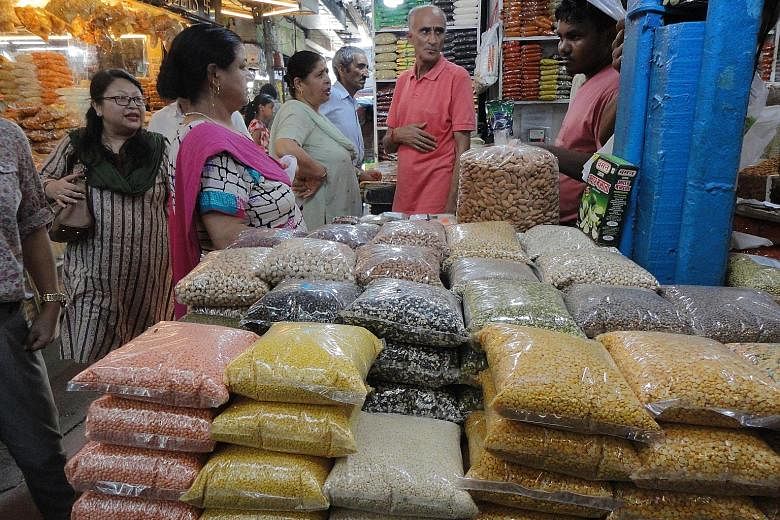An Indian meal is not complete without a dish comprising lentils.
But this staple, called dal in India, and an important source of protein for its people, is fast becoming the most expensive part of a meal, costing as much as a non-vegetarian item like chicken.
Consecutive droughts, stalled production and a growing population have tightened supplies and driven up prices, leading to calls for urgent government intervention.
Prices of some popular pulses like "chana dal", or split Bengal gram, have gone up by over 50 per cent within three months, forcing the government to move towards a crackdown on hoarders and, for the first time, start talks with governments of dal-producing nations around the globe.
Ms Saroj Kumar, 41, who works as a cook in Delhi, said her family of five cannot do without dal, no matter how expensive it gets.
"We can do without vegetables when prices go up but there is no question of not having dal. We don't feel like we have had a proper meal without dal. So, we have no choice, I have to spend more," said Ms Kumar, whose family, like many in India, is vegetarian.
At INA market, a food bazaar in Delhi, the sale of lentils in some of the shops has been slow over the last couple of weeks.
"Sales drop during the summer vacations, anyway. But sales have been slower compared with last summer. The government needs to control prices," said Mr Rajan Sachdeva, who runs a pulses and dry fruits stall.
Indians are the biggest consumers in the world of at least half a dozen varieties of dal.
In the north, Indians eat dal curry with generous dollops of ghee and bread, while in the south, dal is consumed in the form of a lentil curry called sambar, which is eaten with rice, thosai (pancakes) and idli (rice cakes), which also require lentils to make.
India is the world's top producer of pulses but production has stalled to between 17 million and 19 million tonnes a year, forcing the nation to import from Myanmar, Mozambique, Australia and elsewhere.
Imports have been rising steadily from 3 million tonnes in 2013/2014 , with the shortfall currently estimated by the government to be around 7 million to 8 million tonnes.
After two consecutive droughts, the popular "toor dal" variety, for instance, now costs 160 rupees (S$3.20) a kilogram, compared with 72 rupees in 2014. Chana dal has gone from 60 rupees three months ago to 100 rupees now, putting a strain on household budgets.
The government is now looking at bilateral deals with Myanmar and Mozambique.
"We have a huge market for pulses, more of it coming in would be welcome. The government doesn't import dal. But we are exploring this as a long-term mechanism. This would be a government-to-government deal," Mr Hem Pande, a top bureaucrat in the department of consumer affairs, told The Straits Times.
"The government is taking steps. We are also going to crack down on hoarders," he added.
It is understood that the sourcing of dal has been discussed with Myanmar leader Aung San Suu Kyi.
The government is hoping to complete negotiations "as soon as possible" on a deal with Mozambique. The east African nation has requested Indian advisers to help improve production and has also offered land for pulse production.
In other steps to try to ease prices, the government this month increased by five times the buffer stock, which is released into the market to bring down prices.
Last year, it cracked down on hoarders by seizing 134,000 tonnes of pulses while increasing the price at which it buys from local growers.
The move was aimed at encouraging more farmers to grow pulses instead of wheat and rice, which, they find, can be more profitable. A key reason for the low production of pulses is that the crop depends on monsoon rains, and farmers find it easier to grow other crops.
Still, experts said there was really no alternative to increasing production of pulses to keep prices in check. "Why are they looking at Myanmar and Africa? Why not increase production in India? We have a lot of land. They have to support farmers who get better prices for wheat and rice," said Mr S. P. Goenka, spokesman for the Indian Pulses and Grains Association.
He said: "For 40 to 45 years, we concentrated on increasing production of rice and wheat. Now, we need to concentrate on increasing pulse production."

